Breadcrumb
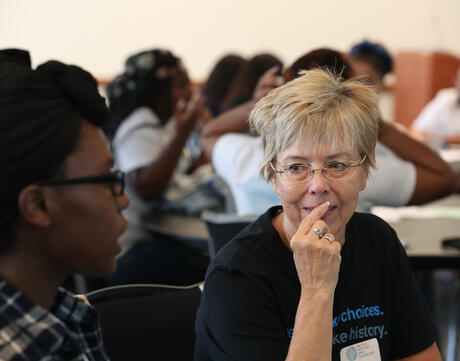
Holocaust and Human Behavior: A Facing History & Ourselves High School Elective Course
Resources
33Duration
Multiple weeksSubject
- English & Language Arts
- History
- Social Studies
Grade
9–12Language
English — USPublished
In this lesson
Overview
About This Course
Created for grades 9 through 12, this high school elective course guides you and your students through a Facing History and Ourselves study of two pivotal moments in history: the Holocaust and the Armenian Genocide. Facing History courses approach the study of history through the examination of human behavior and the impact of choices on historical outcomes. This curriculum is designed to support students through the process of identifying universal themes among historical events while learning to recognize the specific context and particular choices that make every event unique. The ultimate goal is for students to develop their ability to connect the past to the present and make informed choices in the future.
All of the information for teachers on this page, in addition to all of the lesson plans in this course, are available to download as a single Google Doc or PDF here.
How can learning about the choices people made during past episodes of injustice, mass violence, or genocide help guide our choices today?
Students will:
- Recognize the human tendency to create “in” groups and “out” groups and the consequences of that behavior for a society’s universe of obligation.
- Understand the particular historical context for the Armenian Genocide and the Holocaust.
- Wrestle with the choices that individuals, groups, and nations made in response to the Armenian Genocide and the Holocaust, as well as the aspects of human behavior that contributed to those choices.
- Make connections between universal themes related to democracy, citizenship, racism, and antisemitism that these histories raise and the world they live in today.
- Understand their responsibilities as citizens of the world to make choices that help bring about a more humane, just, and compassionate world.
Each lesson in this course includes one or more guiding questions. Unlike the course’s essential question, which is broad and open-ended, guiding questions help to direct student inquiry at the lesson level and are aligned with its specific learning objectives. Answering guiding questions requires deep thinking and textual interpretation. Unlike essential questions, guiding questions might have a clear answer, which students should be able to support with specific evidence from the lesson to demonstrate their understanding of the content.
This course includes:
- 25 lessons plans
- Videos, readings, images, and handouts used throughout student-centered activities
- Student materials in English and Spanish
- Two assessment options: a final argumentative essay and/or a Choosing to Participate Toolbox project
The included primary and secondary resources, as well as the argumentative writing and Choosing to Participate (CTP) Toolbox project assessments, have been selected and sequenced to foster students’ historical thinking, writing, presentation, and communication skills. Throughout this course, students will:
- Expand their proficiency in critical thinking, argumentative and reflective writing, reading comprehension, inquiry, self-discipline, and responsible decision-making.
- Build their capacity for historical understanding and making historical connections.
- Analyze a wide variety of primary and secondary sources, increasing their ability to describe, select, interpret, and evaluate relevant historical evidence.
- Contextualize the individual and collective choices that impacted the Holocaust and the Armenian Genocide and synthesize the ways that the legacies of history connect with contemporary events and the decisions we make in our own lives.
- Develop their leadership skills and competencies to communicate effectively, listen actively, use evidence to support and present their ideas, work with others, problem solve, demonstrate compassion, and negotiate conflict constructively.
- Be empowered to think deeply about their role and responsibility to actively participate in democracy, society, and civic life.
The course is divided into lessons that include:
- Guiding questions and learning objectives
- Lesson overviews
- Pedagogical notes, suggested vocabulary, and recommended teaching strategies
- Additional historical context and background for educators
- Resources from Facing History collections, including Crimes Against Humanity and Civilization: The Genocide of the Armenians and Holocaust and Human Behavior (readings, films, images, and discussion/reflection questions)
- Student-centered activities (including handouts in English and Spanish)
- Assessment options
- Lesson extensions
This course follows the Facing History scope and sequence and draws on and adapts materials from our collections Holocaust and Human Behavior and Crimes Against Humanity and Civilization: The Genocide of the Armenians, as well as the units Teaching “Holocaust and Human Behavior” and Teaching the Holocaust and Armenian Genocide: For California Educators.
The course begins with an examination of the relationship between the individual and society. Students are invited to reflect on the way humans divide themselves into “in” groups and “out” groups and explore how such dynamics contributed to the rise of Turkish nationalism and the Armenian Genocide. Students then dive deep into a historical case study of the Weimar Republic and the Nazi Party’s rise to power in Germany.
Students then bear witness to the human suffering of the Holocaust and examine the range of responses from individuals and nations to the genocidal mass murder perpetrated by the Nazi regime. In the course’s later lessons, students draw connections between this history and the present day, weighing such questions as how to achieve justice and reconciliation in the aftermath of atrocities, how painful histories should be remembered, and how this history educates us about our responsibilities in the world today.
Our mission is to use lessons of history to challenge teachers and their students to stand up to bigotry and hate. We enable teachers to help students develop essential skills for participating in civic life and to facilitate transformative exchanges in their classrooms. As students explore the complexities of history and human behavior, they reflect on the choices they confront today and consider how they can make a difference in their own lives, schools, communities, and world.
The Scope and Sequence
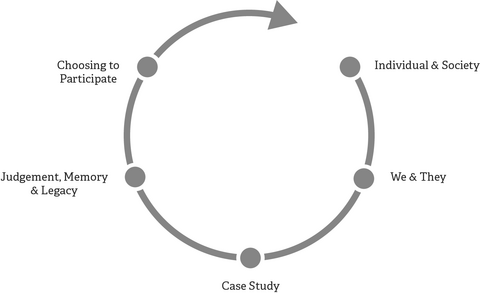

The Scope and Sequence
- A Facing History course begins with an exploration of the relationship between the Individual & Society and how that relationship affects the choices we make. The primary and secondary resources in this section explore some of the dilemmas people face as they establish themselves both as individuals and as members of a group, and as they define themselves and are defined by others. These resources help guide students through the first step of the Facing History journey and introduce ideas about human behavior and decision-making that will serve as a foundation for examining the historical case study of the Armenian Genocide and the Holocaust later.
- Next, students focus on the theme of We & They by exploring the human tendency to divide ourselves into groups and considering the consequences of creating “in” groups and “out” groups. Students then focus on the ways that national and collective identity can help people connect but can also contribute to misunderstanding and conflict. The primary and secondary resources included in this section help students investigate this behavior and analyze how and why themes of individuality, conformity, stereotyping, group loyalty, and responsibilities to those beyond one’s immediate circle have greatly influenced the way many societies and nations have defined their membership over the past several centuries.
- Students then engage in a Case Study approach to learning as they apply historical reasoning and the concepts related to individual and group behavior to the two-part case study of the Armenian Genocide and the Holocaust. The primary and secondary resources for this section begin an examination of the choices that ultimately resulted in the genocide of the Armenians in the Ottoman Empire during World War I and its aftermath in Turkey and Europe. As the study continues, students trace the emergence and eventual demise of democracy in Germany, explore the rise of the Nazis, and follow the steps that led to a second world war and the mass murder of 6 million Jews and millions of other victims. The resources in this case study invite students to examine the idea of democracy and what is essential to support and sustain it. They also challenge students to think about the choices available to individuals in times of crisis and the factors that influence individual decision-making.
- As students move from thought to judgment, they discuss questions of Judgment, Memory & Legacy. During this step, students examine complicated questions: Who is responsible, and how can they be held accountable? Is justice possible? Can a society torn apart by war and genocide find healing and reconciliation? The questions then extend beyond the immediate aftermath of mass violence and reach into our lives today: What have we learned from this history? How should it be remembered? Can we prevent genocide, mass murder, and other atrocities from occurring again? The primary and secondary resources included in this section explore some of those legacies, and they help students consider what it means not just to learn about this history but also to remember it and acknowledge how it influences our lives today.
- Students finish their course of study by considering how understanding the past can connect with the issues of the present in the Choosing to Participate step. The primary and secondary resources in this final phase of the course provide examples of everyday individuals and groups whose choices and actions have made a difference in their community and nation. These stories encourage students and teachers to think about the ways we can participate in civic life as caring, thoughtful citizens in our communities and the world around us, and they help us reflect on the choices and actions that will strengthen our democracy and our communities rather than make them more fragile.


Facing History created the Pedagogical Triangle for Historical and Civic Understanding to inform and balance our program and lessons. This begins with intellectual rigor: students are challenged to develop a deep understanding of history and its relationship to their lives through exposure to rich content, primary source documents, stimulating classroom discussion, carefully designed activities, and thought-provoking assignments. The intellectual rigor of this course is rooted in the habit of ethical reflection as students ponder the implications of decision-making and human behavior embedded in the study of historical examples of collective violence. Attention to emotional engagement helps students develop the skills necessary to become emotionally attuned to the past and present lives they study and discuss. In our pedagogical triangle, the arrows between intellectual rigor, emotional engagement, and ethical reflection are bidirectional, as these processes strengthen each other. At the center is students’ civic agency—the goal is to support students as they develop a heightened sense of civic responsibility throughout this Facing History course and build the corresponding self-confidence that will empower them to play a positive role in their classrooms, schools, communities, and the world beyond.
Preparing to Teach
A Note to Teachers
Before beginning this course, please review the following guidance to establish and nurture a reflective classroom community.
Many teachers want their students to achieve emotional engagement with the history of the Armenian Genocide and the Holocaust and therefore teach this history with the goal of fostering empathy. However, like any examination of pivotal moments in history, this course includes historical descriptions and firsthand accounts that some students may find unsettling.
We can’t emphasize enough the importance of previewing the readings and videos in this curriculum to make sure they are appropriate for the intellectual and emotional needs of your students.
It is difficult to predict how students will respond to primary and secondary source readings, documents, and films. One student may respond with emotion to a particular reading, while others may not find it powerful in the same way. In addition, different people demonstrate emotion in different ways. Some students will be silent. Some may laugh. Some may not want to talk. Some may want to talk a lot. Some may take days to process difficult stories. For some, a particular firsthand account may be incomprehensible; for others, it may be familiar.
Our experience tells us that it is often problematic to use graphic images and films or to attempt to use simulations to help students understand aspects of this history. Such resources and activities can traumatize some students, desensitize others, or trivialize the history.
We urge teachers to create space for students to have a range of reactions and emotions. This might include time for silent reflection or writing in journals, as well as structured discussions to help students process content together. Some students will not want to share their responses to emotionally challenging content in class, and teachers should respect that during class discussions.
When teaching emotionally challenging content, it is crucial for educators to allow for a variety of responses, or none at all, from students to authentically support their emotional growth and academic development.
We believe that a classroom in which a Facing History and Ourselves course is taught should be a microcosm of democracy—a place where explicit rules and implicit norms protect everyone’s right to speak; where different perspectives can be heard and valued; where members take responsibility for themselves, each other, and the group as a whole; and where each member has a stake and a voice in collective decisions. You may have already established rules and guidelines with your students to help bring about these characteristics in your classroom. If not, it is essential at the beginning of this course to facilitate a supportive, reflective classroom community.
Two ways in which you can create a strong foundation for a reflective classroom are through the use of classroom contracts and student journals. Even if you already incorporate both of these elements into your classroom, we recommend taking a moment to review them. See Lesson 1: Introducing the Course for an activity on creating a classroom contract, and learn more about using journals in your classroom.
This section was adapted from the Start with Yourself section of the Facing History Unit Planning Guide.
Students learn best when their teachers are purposeful in their planning and responsive to students’ needs. This process starts before the planning even begins, with teachers taking the time to reflect on their own identities and ideas about teaching and learning, as well as getting to know their students as unique individuals and learners.
When educators engage in this reflective process and develop a curriculum and pedagogy that is relevant and responsive to the individual and collective needs of their class, the classroom becomes a space that fosters curiosity about self and others, empathy, and a sense of agency—all tools that students need to enact positive change in their communities and the world.
Directions: The following reflection questions can be invaluable for educators before embarking on the Holocaust and Human Behavior elective course journey. Reflect on them as you see fit before beginning your course preparation.
Know Your Purpose
Educators always need to consider our core beliefs about teaching and learning. This process starts with understanding our “why,” the key principles that guide our planning and pedagogy for the students in our classroom each year.
- What are your core beliefs about teaching and learning?
- What factors helped to shape these core beliefs?
- If you were one of your students, what would you say about your teaching?
Consider Your Own Background and Experiences
When we reflect on who we are, it is important that we consider our own paths as students and the ways in which our experiences might shape our own pedagogy and curricular decisions.
- How did your education during adolescence expand your worldview and help you engage with life experiences different from your own? How did it fall short of providing these growth opportunities?
- You are now teaching a humanities and/or social studies course. Did you enjoy these kinds of classes when you were in school? Why or why not?
Activity: Mapping Your Own Educational Journey
What key moments have shaped your educational journey, and how would you represent these moments symbolically or visually? Start by reflecting on memorable experiences you had during your own schooling, including pivotal moments that shaped you as a learner, influential mentors, and professional development you found meaningful. Then adapt the Life Road Maps teaching strategy to create your educational journey map. Consider its shape (a line, zigzag, spiral, or something else) and where to include potholes, highways, hills and valleys, detours, and other journey metaphors as you use images, symbols, colors, words, and phrases to map your journey.
What does your educational journey map reveal, and how can it help to inform the decisions you make in your classroom?
Consider Your Students’ Backgrounds and Experiences
Knowing our students as unique individuals, as well as understanding their relationship to learning, can help us support them in a variety of ways.
- How would you describe the demographics of the students in your classroom/school (grade level, ethnicity, socioeconomic factors, identity, native language)?
- In what ways does the student population in your classroom reflect the student population at your school?
- When have you observed students to be most motivated in your classroom?
- How might your students’ own backgrounds and life experiences shape their encounter with the curriculum in your course?
- What important skills and knowledge do your students already have, and how can this course relate to what they bring to the classroom?
Related Materials
This section was adapted from the Start with Yourself section of Facing History’s Coming-of-Age Unit Planning Toolkit and the Back to School: Building Community for Connection and Learning Toolkit.
Students will bring a range of experiences into the classroom. Incorporating strategies that support their skills, establishing and maintaining supportive relationships, and making responsible and caring decisions will help students feel connected to their learning and to one another. This is especially important for students who have experienced trauma and/or grief individually, in their communities, and in the world at large.
Consultant and community college teacher Alex Shevrin Venet discusses four core priorities for trauma-informed instruction: connectedness, predictability, flexibility, and empowerment. At the heart of this approach lies the relationships between students and teachers. When teachers prioritize cultivating these relationships, everyone benefits.
- Connectedness: When students have a strong relationship with their teachers and peers, it is easier to support their emotional well-being and respond to their urgent needs as these arise. Students need regular reminders that their teachers care about them, and they need opportunities to connect with one another in informal and academic contexts.
- Predictability: By creating predictable opening and closing routines and structures, teachers can help their students feel safe and emotionally secure. Using routines such as check-ins and journaling can help students engage with the learning and can support their emotional well-being.
- Flexibility: Incorporate best practices in culturally responsive teaching and differentiation by adopting a flexible approach to instruction and assessment. Prioritizing what really matters in a given moment, even if it means letting go of some content, and engaging students in this process allows them to feel a sense of agency over their own learning and the classroom environment.
- Empowerment: A classroom environment that takes into account the individual and collective needs of all students, along with the wide range of experiences and expertise they bring with them, empowers students. Including students in the class decision-making provides them with authentic choices and tasks and the opportunity to build their leadership skills, along with their ability to seek or offer help when needed. Tapping into their expertise and interests and giving them voice and choice to make decisions about their learning builds students’ self-confidence and sense of agency.
Extension: Consider engaging with these teacher-focused reflection questions and action items to help you center relationships and care in your teaching.
Consider utilizing the rest of the Back to School: Building Community for Connection and Learning Toolkit. This guide provides teacher resources and activities that will help lay a foundation for a reflective and caring community in the opening days of the school year and/or the beginning of your elective course.
Routines can be a key component of a brave and reflective classroom community.
Setting aside five to ten minutes at the beginning and/or end of class to welcome students to the learning space, gauge their emotional well-being, and nurture community can help students experience school as a crucial part of their day that is predictable, meaningful, and supportive.
As you work to establish and nurture a reflective classroom community, consider introducing additional student-centered activities and opening and closing routines from our collection Community Matters: A Facing History & Ourselves Approach to Advisory. This resource guide contains a year’s worth of activities, student handouts, and best practices to help you build student-centered spaces where honest questioning, discussion, and social and academic growth can occur.
Opening routines set a welcoming and inclusive tone.
They are short and can be done in small groups or as a full class before moving on to the main learning activities for the day. You might begin every class with the same opening routine, assign specific routines to each day of the week, or open with something different each day. The important thing is to establish the first few minutes as a time to engage the group in reflection, reestablish community, build relationships, and mindfully transition into the day’s academic activities. You may want to choose an opening routine for each lesson that helps set the energy level for the day’s learning needs or piques curiosity around the topic.
Fostering a Reflective and Supportive Community, Section C. Opening Routines (from Community Matters, PDF page 12) offers activities and prompts that are designed to help you set a welcoming and inclusive tone and can be used repeatedly throughout the course. These opening routines involve student input and foster leadership.
Closing routines provide an opportunity to reestablish connection, summarize key concepts, reflect on emotions, and set academic and personal goals.
Closing routines can take place in whole-class discussions, small groups, and individual reflections. As with opening routines, repeating closing routines will help your students internalize the steps and modeled behavior, and eventually students will be able to facilitate routines on their own.
Fostering a Reflective and Supportive Community, Section D. Closing Routines (from Community Matters, PDF page 15) offers activities and prompts that can serve as a transition from the topic of the day, help students summarize or reflect on something from the lesson, or offer a connection to or preview of the next lesson. Repeating a closing routine will help your students internalize the behavior, which will lead to more meaningful reflection and contribute to nurturing an inclusive community where students can be seen, valued, and heard while they develop the skills to build their voices.
Throughout this guide, there are occasional suggestions for opening and closing routines that pair well with specific activities; however, we encourage you to choose what routines work best for your unique classroom environments.
You can also access a digital version of our Establishing Opening and Closing Routines collection on our website.
Facing History and Ourselves is committed to helping students develop their ability to critically examine their surroundings from multiple perspectives and make informed judgments about what they see and hear. Keeping a journal is one tool that Facing History has found to be instrumental in helping students develop these skills.
Why Journals?
- Many students find that writing or drawing in a journal helps them process ideas, formulate questions, and retain information.
- Journals make learning visible by providing a safe, accessible space for students to share thoughts, feelings, and uncertainties.
- Journals are also an assessment tool—something teachers can review to better understand what their students know, what they are struggling to understand, and how their thinking has changed over time.
- Journals help nurture the classroom community.
- Through reading and commenting on journals, teachers build relationships with students.
- Frequent journal writing also helps students become more fluent in expressing their ideas in writing or speaking.
Review our Journals in a Facing History Classroom teaching strategy for more guidance on using journals as an effective learning tool in the classroom.
Related Materials
Lesson Plans
Lesson Plans and Assessments
Introducing the Course

Exploring Identity
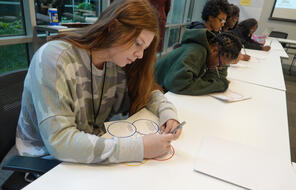
Stereotypes and “Single Stories”
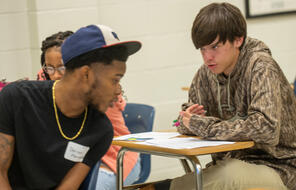
Universe of Obligation
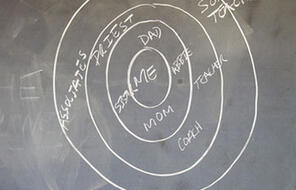
Step 1: Introducing the Assessments
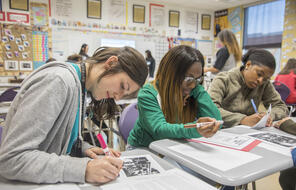
The Roots and Impact of Antisemitism

The Rise of Nationalism and the Collapse of the Ottoman Empire
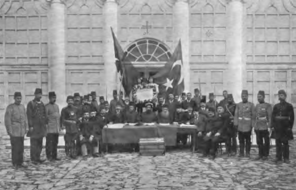
Genocide under the Cover of War
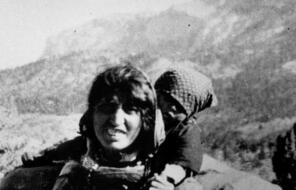
Step 2: Introducing Evidence Logs

Nationalism and the Aftermath of World War I
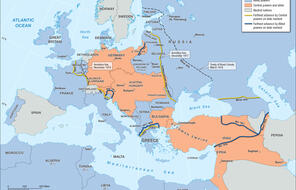
The Weimar Republic
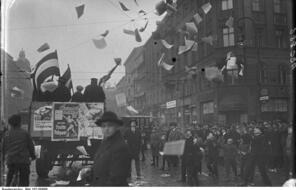
Step 3: Adding to Evidence Logs, 1 of 4

The Rise of the Nazi Party
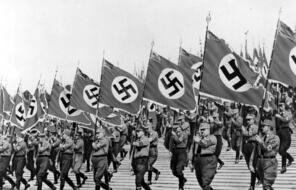
European Jewish Life before World War II
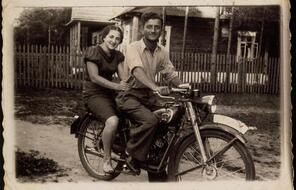
Dismantling Democracy
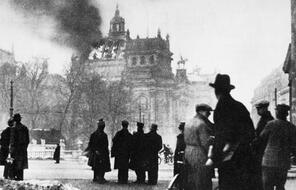
Do You Take the Oath?
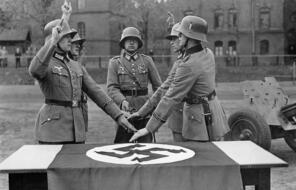
Laws and the National Community
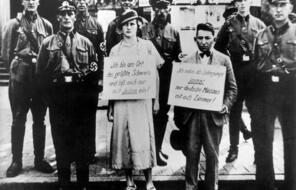
Step 4: Adding to Evidence Logs, 2 of 4

The Power of Propaganda
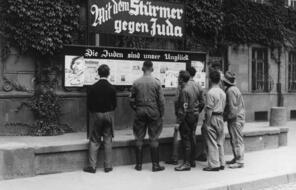
Youth and the National Community
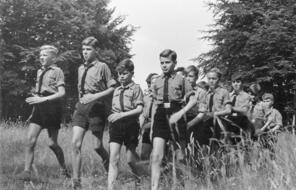
Kristallnacht
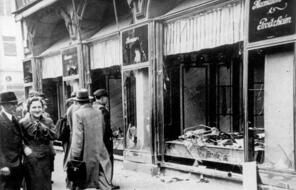
Responding to a Refugee Crisis
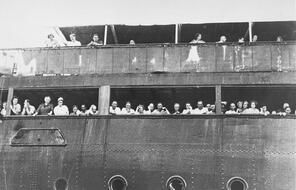
Race and Space
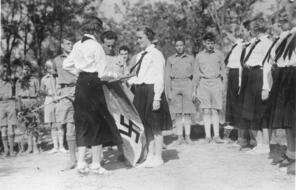
Step 5: Adding to Evidence Logs, 3 of 4
The Holocaust: Bearing Witness

The Holocaust: Range of Responses
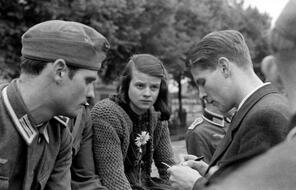
Justice and Judgement after the Holocaust
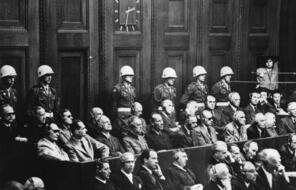
Step 6: Adding to Evidence Logs, 4 of 4
Confronting Genocide Denial
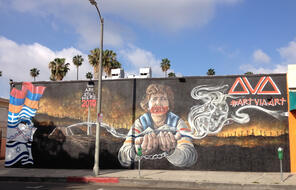
Survivor Testimony and the Legacy of Memory
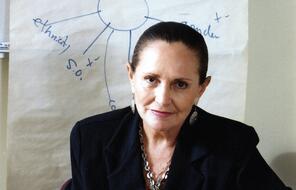
Choosing to Participate
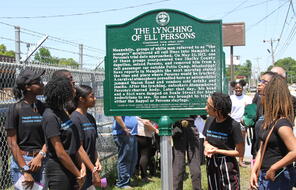
Step 7: Refining the Thesis and Finalizing Evidence Logs
Glossary of Terms | Holocaust and Human Behavior High School Elective Course
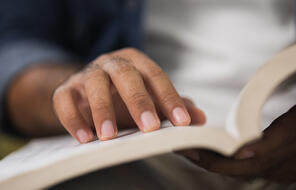
Materials and Downloads
Quick Downloads
You might also be interested in…
Pre-War Jewish Life in North Africa
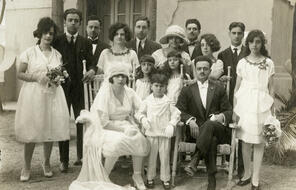
Responses to Rising Antisemitism and Antisemitic Legislation in North Africa
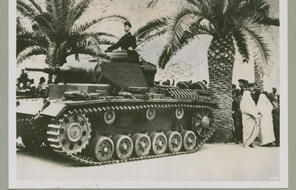
The Holocaust and North Africa: Resistance in the Camps
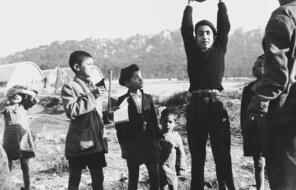
The Holocaust and Jewish Communities in Wartime North Africa
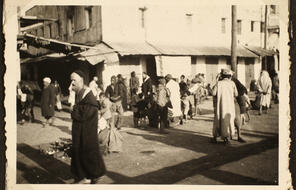
Resources for Civic Education in California

Resources for Civic Education in Massachusetts

Antisemitic Conflation: What Is the Impact of Conflating All Jews with the Actions and Policies of the Israeli Government?

Holocaust Trivialization and Distortion
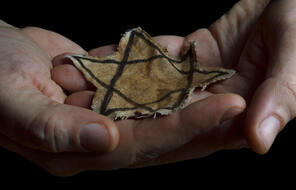
Contextualizing a Found Poem
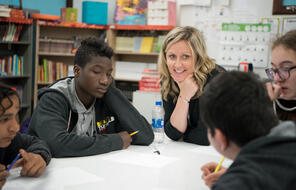
Teaching with Video Testimony
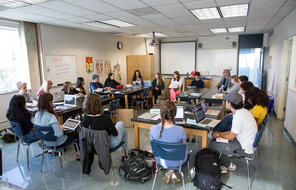
Teaching Holocaust and Human Behaviour (UK)

Teaching with Testimony
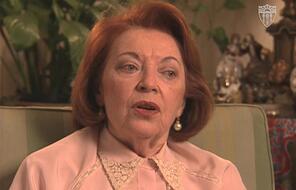
Unlimited Access to Learning. More Added Every Month.
Facing History & Ourselves is designed for educators who want to help students explore identity, think critically, grow emotionally, act ethically, and participate in civic life. It’s hard work, so we’ve developed some go-to professional learning opportunities to help you along the way.
Exploring ELA Text Selection with Julia Torres
On-Demand
Working for Justice, Equity and Civic Agency in Our Schools: A Conversation with Clint Smith
On-Demand
Centering Student Voices to Build Community and Agency
On-Demand

